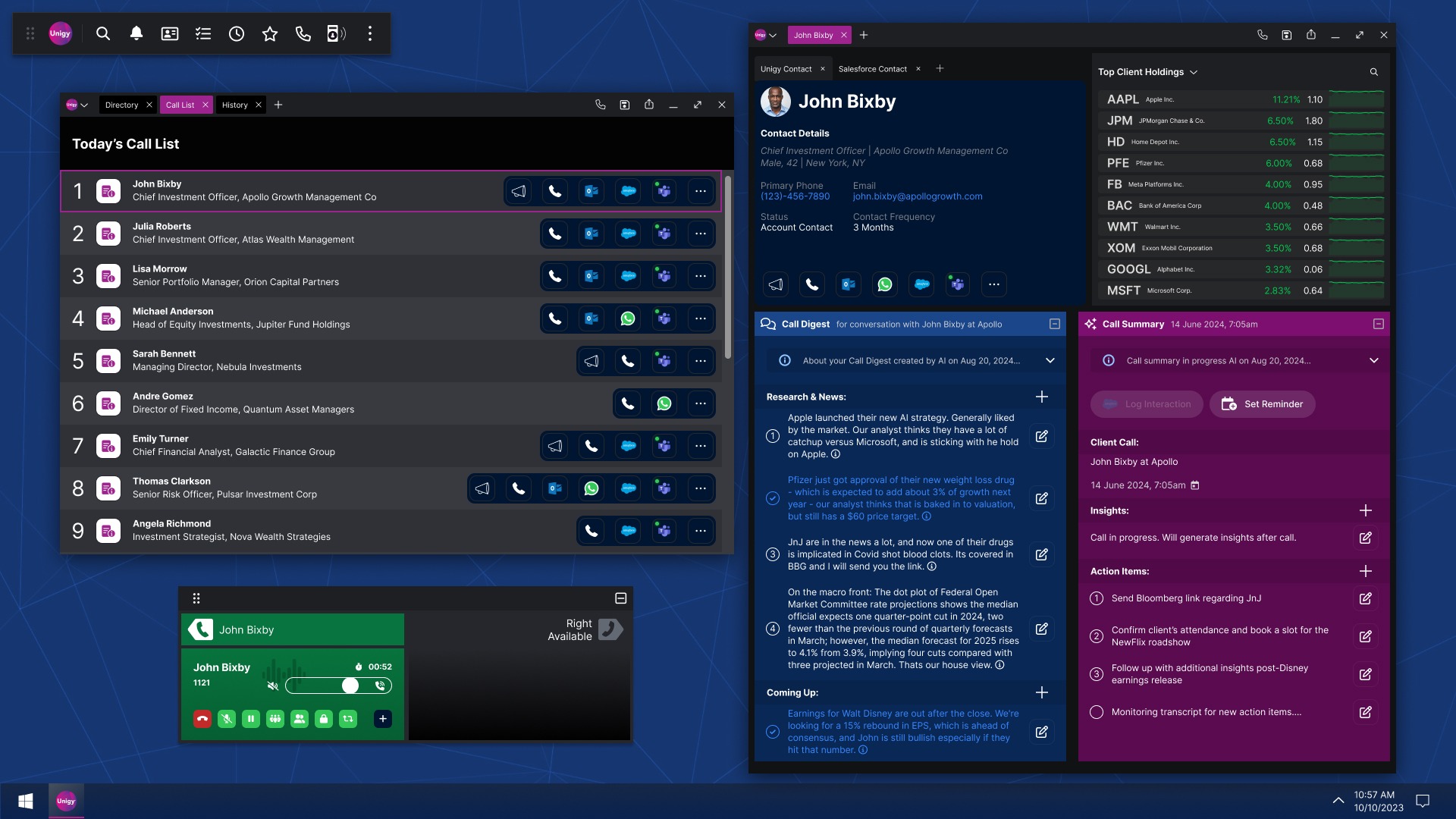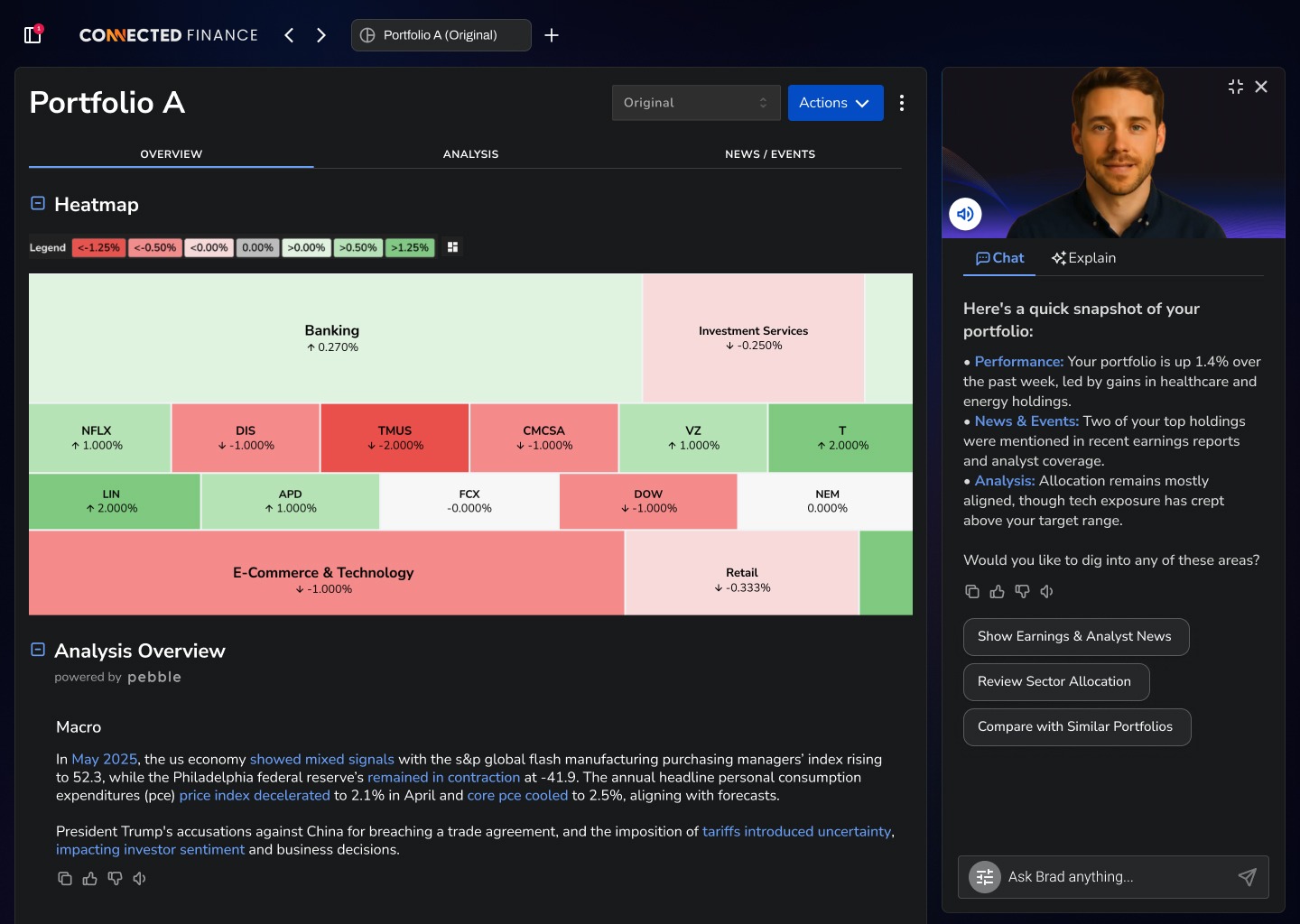From Static to Dynamic: How AI Is Transforming Financial User Experiences
Generative AI is transforming financial UX from static dashboards into dynamic, decision-making partners. Instead of relying on users to interpret data, AI-driven interfaces proactively surface insights, adapt to context, and learn from behavior. This shift redefines the front end as a collaborator that serves experts who need transparency, everyday users who need clarity, and machines that will consume data directly. The firms that succeed will balance automation with human judgment while applying intelligence with purpose, rigor, and imagination.
From Static to Dynamic: How AI Is Transforming Financial User Experiences
The age of dashboards is ending.
For decades, financial applications treated the interface as a passive surface, with dense layouts, static grids, and lots of manual interpretation. Every pixel assumed a knowledgeable user behind the screen – someone willing to dig, filter, derive meaning, and take the next step.
That paradigm is collapsing. Generative AI is transforming the front end from a reporting layer into an active partner in decision-making. Financial firms have an unprecedented opportunity to build agentic systems that anticipate and orchestrate complex workflows. This will require far more than adding chat windows or embedded assistants – it will take a wholesale redefinition of how users interact with technology.
The possibilities are nearly endless, but whatever shape it takes, the evolution is underway: from informative and reactive to proactive and agentic. Those who master it will shape how future generations engage with financial products.
The Death of Static
For years, many financial firms measured their UX success by how much data they could fit onto a screen. Teams packed in more features, refined widget libraries, and layered filtering options – assuming (or hoping) the user would always ask the right question or know where to look. But whether they know it or not, today’s users expect the interface to do more than display. They expect it to interpret, prioritize, and initiate.
Generative AI has accelerated expectations. A portfolio manager should not need to hunt for signals; signals should find them. A retail investor shouldn’t need to know every metric that explains performance; the system should provide them an overview of the potential drivers, in plain language. In other words, the front end is no longer just the display layer – it’s the control layer where intelligence manifests.
In sum: static dashboards treated UX as a container. With generative AI, it can be treated as a true collaborator.
What Dynamic, Agentic UX Looks Like
Dynamic, AI-driven UX is defined less by aesthetic and more by behavior. Three core characteristics distinguish it from traditional, design-driven front-ends.
First, proactivity. Before a user clicks, an agentic system has already scanned data, surfaced shifts, and prepared relevant context. Overnight index changes, liquidity events, anomalies – not delivered as generic alerts, but filtered against what materially matters to this portfolio, this workflow, this user. Another example: IPC’s OneView platform automatically transcribes voice calls across the trading desk and adds that context to all user workflows.
Second, contextual adaptation. Powered by generative AI, layouts no longer remain fixed. When liquidity is the central risk, liquidity visuals rise to the top. When regulatory exposure dominates, the interface foregrounds filings, timelines, and impact analysis. While “personalization” has become an overused word, this concept captures its true essence: functional customization driven by situational relevance.
Finally, adaptive learning. True agentic systems do more than respond – they internalize patterns. Over time, the interface recognizes how users approach recurring tasks, anticipate the sequence of steps, and shape the environment accordingly. Users are freed from the burden of orchestrating their workflow each time.

Better Experiences for All
AI does not redefine UX for a single user type. It introduces a spectrum of responsibility across three distinct audiences:
- Domain Experts – Portfolio managers, traders, and analysts demand accuracy and auditability. They scrutinize sources and reasoning. Tools that gloss over logic are quickly abandoned. For these users, AI must cite data, expose methods, and allow drill-down – not merely summarize. This requires a deterministic foundation, built on a clean, well-governed database.
- Everyday Users – Here, clarity and confidence outweigh complexity. Consumers might give a system as little as 30 seconds to prove value – otherwise, they will abandon it. A system that merely observes goes unnoticed, while one that forces its functionality on the user gets rejected. Successful agentic UX for this audience guides without prescribing. It’s the difference between “your portfolio dipped due to energy underperformance” and “to adhere to your model, you should rebalance into tech; here are some thoughts on how and some research to help.”
- AI as User (Machine-to-Machine UX) – This audience is emerging, but inevitable. APIs will increasingly be consumed by autonomous agents rather than human eyes. That means UX – historically a visual discipline – must become machine-readable, modular, and deterministic. The interface must speak structure, not just style.
The diversity of these audiences underscores the challenge of adopting AI for UX. Firms cannot chase the shiny new object; their choices must be driven by the goals, preferences, and habits of their users.
Building the Agentic Front End
Make no mistake: the leap to agentic UX is a massive undertaking. It cannot be achieved through features alone. Instead, it must be achieved through collaboration. This evolution demands designers who think in terms of journeys rather than layouts, engineers who understand that generative output must be grounded in deterministic truth, and product teams willing to define the limits of automation before they pursue its possibilities. If one leg of this stool wobbles, firms will lose the trust of their audience. And innovation without adoption isn’t worth very much.
What emerges from this is not a new veneer, but a new way of working. Static products asked users to find meaning. Agentic products will offer it already in motion. And while the audiences may differ, the mandate is the same: systems must think on behalf of the user, but never in place of them. The overall goal should be to make the most of whatever human involvement remains, even if it’s as straightforward as reviewing and approving.
Expero’s view is simple: intelligence without alignment, rigor, and imagination is just noise. The next generation of financial UX will not be defined by who adopts AI first, but by who applies it with purpose. We’re ready to help you stand among the leaders.

Accelerate Your Business. Get in Touch.
Have a vision? Tell us what you’d like to build and one of our experts will get back to you.
